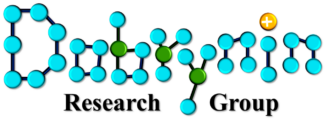Yuan Tian, Maria Ina, Zhen Cao, Sergei S. Sheiko, and Andrey V. Dobrynin
Knowledge of the work of adhesion and surface tension directs the design of new materials for coatings, adhesives, and lubricants. We develop an approach to determine both properties from analysis of equilibrium indentations of rigid particles in contact with soft polymeric materials. In accord with coarse-grained molecular dynamics simulations, the indentation depth is described by the crossover expression combining together the adhesion and wetting models, which takes into account both the elastic energy of the contact and full surface free energy change outside and inside the contact area. The crossover expression is applied to obtain the work of adhesion and substrate surface tension for polystyrene (PS), carboxyl-modified polystyrene (PS-COOH), and poly(methyl methacrylate) (PMMA) particles in contact with poly(dimethylsiloxane) (PDMS) networks made of brush-like and linear chains. This analysis results in the work of adhesion W = 48.0 ± 2.9 mN/m for PS/PDMS, W = 268.4 ± 27.0 mN/m for PS-COOH/PDMS, and W = 56.2 ± 2.4 mN/m for PMMA/PDMS and the surface tension of the PDMS substrate to be γs = 23.6 ± 2.1 mN/m.

